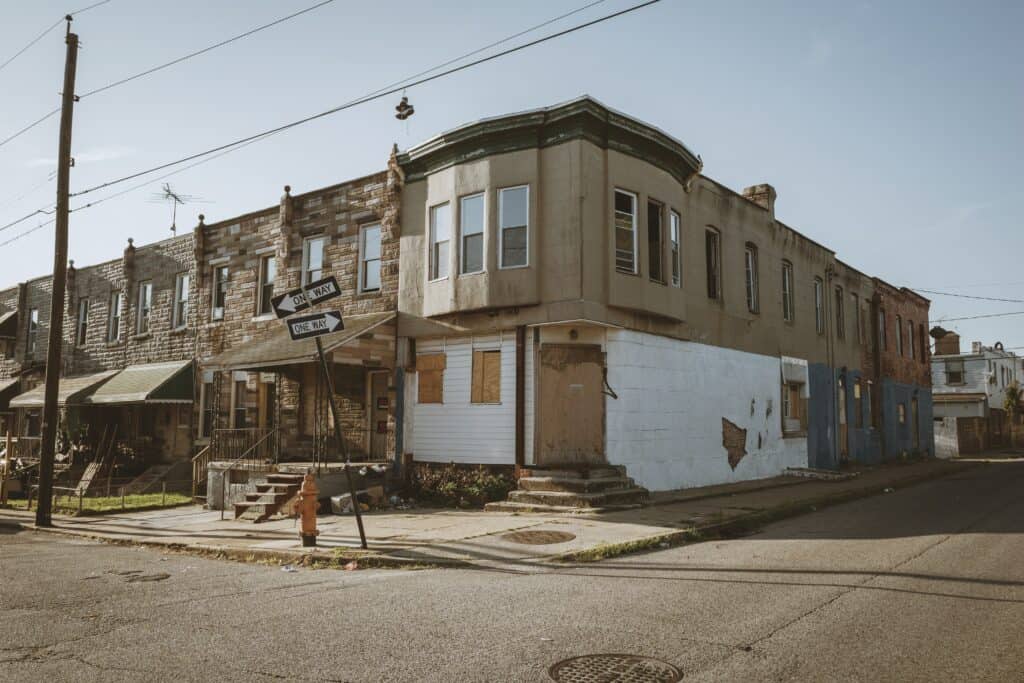The toxic chemical industry has engulfed entire residential areas of Baltimore. But in the long-suffering neighborhood of Curtis Bay, the local community is fighting back.
Recently, I attended the 2022 Organic Week’s panel discussion on the impact of agricultural pesticides and industrial toxicity on communities of color. The dynamic voice of Dr. Nicole Fabricant, Professor of Anthropology at Towson University, highlighted the environmental injustices experienced by residents of the Curtis Bay community in South Baltimore, Maryland.
Historically, Curtis Bay was a working-class White neighborhood. In recent years, Curtis Bay has seen an increasing Black population, from 25.18% Black in the 2000 Census, rising to 38.74% in the 2020 Census.
Every one of those locals has one poisonous neighbor: Curtis Bay is home to the largest medical waste incinerator in America. The Environmental Protection Agency’s Environmental Justice Screening and Mapping Tool indicates that Curtis Bay is in the 95th percentile for hazardous waste and is highly polluted.
This problem is not isolated to Curtis Bay – but it also does not toxify Baltimore’s wealthier, Whiter neighboring counties, as a 2014 study published in the journal Cities notes. City residents are not even getting significant employment opportunities from the heavy industries that drive this pollution crisis – “although industries shed thousands of good-paying jobs, Baltimoreans have to live with still-functioning and polluting facilities,” the study notes – indicating that businesses are treating Baltimore purely as a dumping ground.
“These young people are building out alternative green industries [and] developing unionized jobs for Black and Brown youth and community members within Curtis Bay.” — Dr. Nicole Fabricant
For years, residents have been advocating for an end to the industrial pollution caused by incinerators. The agrochemical production in Curtis Bay has created some of the country’s highest asthma and respiratory illness rates. Fabricant shared that the second-largest coal-export pier in the United States is located in Baltimore, and its open-air coal pit is anchored near a playground in Curtis Bay. Less than a year ago, a toxic explosion at the coal transfer tower of the CSX Curtis Bay Pier wreaked havoc on the community and locals have every reason to fear it could happen again as large amounts of crude and explosive oil continue to be stored in Curtis Bay.
Fabricant spoke passionately about the pollution and toxicity destroying communities in South Baltimore. And she elevated what a group of young activists is doing to turn things around. Fabricant leads students from Benjamin Franklin high-school and Towson University in a Participatory Action Research Project where young people ask qualitative questions about environmental injustices, conduct research, and disseminate their findings.
“In Curtis Bay, young people are creating solutions,” Fabricant said. “These young people are building out alternative green industries such as [the art collective] Broken Glass and a 64-acre compost site. These young people are developing unionized jobs for Black and Brown youth and community members within Curtis Bay.”
During the pandemic, Fabricant and her students worked on the Cherry Hill Farm, a farm controlled by Black Yield Institute, a Black Power organization in Baltimore. The farm is located in a food apartheid area one mile north of Curtis Bay. This farm provided fresh fruits and vegetables for the community during the pandemic.
These agroecological projects are not just run by and for Black people, Fabricant explained. Their day-to-day operations also draw upon traditional farming and agro-ecological practices handed down through generations of Black Americans with deep ancestral knowledge feeding local communities.
Cherry Hill Farm’s success has, perversely, put a target on the Black Yield Project’s back. Baltimore politicians are attempting to rip the land out from underneath the community because the land was not permanently owned by the community. The city has not bothered to develop or improve the land, yet seeks to prevent locals from making it productive.
There is a need for land and resource redistribution, particularly to Black and Brown communities, Fabricant said. The Black Yield Institute and Farm Alliance have laid out a city-wide plan for Black land reparations. Fabricant noted the importance of supporting programs for land redistribution and radical resource distribution from large-scale organics. The young people of Curtis Bay need more green jobs; land redistribution could create a path for large-scale organics work to fill that need.
The South Baltimore Community Land Trust (SBCLT), an organization that builds affordable housing, puts pressure on Baltimore city to ensure that land remains in the hands of Black and Brown communities. The group also organizes around the irreparable damage toxic incinerators and landfills are creating in local communities, in partnership with Fabricant and her students.
Taken together, Fabricant’s presentation delivered a powerful and simple message: As dire as the environmental discrimination in places like Curtis Bay is, local communities have the solutions. In the fight for justice in Curtis Bay and elsewhere, the invention, initiative, and brilliance of local residents is the key to creating an equitable and sustainable future – if those accustomed to deciding what happens in places they’d never live themselves would just get out of the way.
Monica Grover is the Project Manager for Membership, Policy & Equity at NCRC.
Photo by Nehemias Mazariegos on Unsplash



